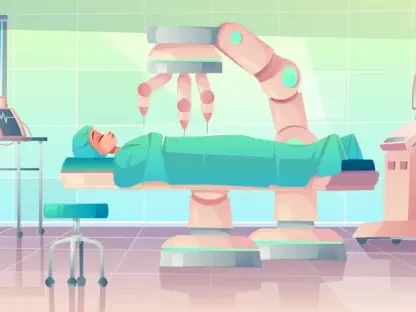Data interoperability is revolutionizing patient care within the healthcare sector by enabling the seamless exchange of patient records across diverse healthcare systems and providers. This transformational component of healthcare informatics ensures that healthcare providers have access to comprehensive and up-to-date patient information, regardless of where or when the care was received. By bridging communication gaps between different health technology systems and software applications, data interoperability allows providers to communicate, exchange, and utilize shared information more effectively. This results in more accurate diagnoses, personalized treatments, and improved patient outcomes.
The Concept of Data Interoperability in Healthcare
Interoperability in healthcare operates as a common language that allows disparate healthcare systems to effectively “talk” to one another and share essential patient data. The Health Information and Management Systems Society (HIMSS) defines it as the capability of different information systems, devices, or applications to connect and communicate in a coordinated manner, both within and across organizational boundaries. The essence of this coordination is to optimize health outcomes for individuals and populations. Achieving true interoperability hinges on several critical components that need to be addressed and implemented.
A key element in interoperability is the establishment of data standards. These are agreed-upon formats that govern how healthcare data is recorded, stored, and transmitted. One of the most promising standards is HL7’s Fast Healthcare Interoperability Resources (FHIR), which is designed for the modern Internet, making development and implementation more straightforward. Another essential component is Application Programming Interfaces (APIs), which enable various software systems to communicate with each other seamlessly. Additionally, Health Information Exchanges (HIEs) play a crucial role in overseeing and governing the exchange of health-related information among different healthcare providers and institutions. These components collectively form the backbone of interoperability efforts.
The Role of FHIR in Advancing Interoperability
The development of FHIR by Health Level Seven International (HL7) has emerged as a major milestone in advancing health data interoperability. Unlike previous standards, FHIR is explicitly designed for today’s Internet, which simplifies the process for developers and systems to implement and integrate. A survey conducted by Chilmark Research revealed that 72 percent of healthcare organizations are either using or planning to adopt FHIR. Major technology giants like Apple, Google, and Microsoft have also adopted FHIR for their health records projects, further accelerating its acceptance across the industry and demonstrating its versatility and potential.
Interoperability plays a foundational role in achieving the overarching goals of healthcare informatics, contributing significantly to the delivery of excellent patient care. By facilitating the creation of complete and comprehensive patient health records, interoperability allows data from multiple providers and systems to be aggregated effectively. This ensures that healthcare providers have access to the same patient information, which in turn aids in better coordination of care, reducing duplications, and preventing errors. Furthermore, with access to thorough and up-to-date patient records, healthcare providers can make more informed decisions regarding diagnosis and treatment, ultimately enhancing patient care.
Benefits of Data Interoperability for Patient Care
One of the most notable benefits of data interoperability is the empowerment of patients who can access and manage their health information more easily. This fosters greater engagement in personal healthcare, as patients can make more informed decisions about their treatment options. By aggregating data from multiple sources, healthcare organizations can also analyze trends more effectively, leading to improved management and care of entire populations. Real-world examples illustrate the profound impact of interoperability on patient care. The eHealth Exchange, for instance, is one of the largest health information networks in the United States. It connects over 75 percent of U.S. hospitals, 70,000 medical organizations, 3,400 dialysis centers, and 8,300 pharmacies.
This extensive network facilitates real-time sharing of patient information, which significantly enhances care coordination and patient outcomes. For example, if a patient from New York falls ill while vacationing in California, clinicians can instantly access the patient’s health information to provide informed and appropriate care. Another notable example is the Veterans Health Information Exchange (VHIE) program, which allows the Department of Veterans Affairs (VA) to share patient information with non-VA healthcare providers. This initiative vastly improves the likelihood that veterans receive optimal care regardless of their location. A study published in the Journal of the American Medical Informatics Association found that using VHIE is associated with a 58 percent reduction in unnecessary clinical exams, improving the patient experience and offering substantial cost savings.
Challenges in Achieving Full Data Interoperability
Despite its vast potential, achieving full data interoperability in healthcare faces several significant challenges that need to be overcome. Technical hurdles are at the forefront, as different health systems often use distinct software and data formats, complicating the integration process and making it highly time-intensive. Data privacy and security concerns are paramount, particularly as sharing sensitive patient information across various systems requires robust security measures that comply with stringent regulations like HIPAA in the U.S. and GDPR in Europe. These challenges highlight the intricate balance between functional interoperability and data protection.
Cost barriers also pose a significant challenge, as implementing interoperability solutions can be expensive, especially for smaller healthcare providers with limited resources. Resources for initiating and maintaining these solutions must be carefully allocated. Moreover, resistance to change remains a notable obstacle, with some healthcare providers reluctant to adopt new systems or alter traditional workflows. Finally, data governance issues further complicate the interoperability landscape. Determining ownership and control of patient data when it is shared across various healthcare organizations can be highly complex, requiring clear, defined policies and protocols to navigate effectively.
The Future of Data Interoperability in Healthcare
Data interoperability is transforming patient care in the healthcare industry by facilitating the seamless exchange of patient records across various healthcare systems and providers. This crucial aspect of healthcare informatics ensures that healthcare professionals have access to complete and current patient information, no matter where or when the care was provided. By bridging communication gaps between different health technology systems and software applications, data interoperability allows medical professionals to communicate and share information more efficiently. This leads to more accurate diagnoses, personalized treatments tailored to each patient’s unique needs, and ultimately, better health outcomes. By standardizing data formats and ensuring that disparate systems can talk to each other, data interoperability enhances coordination among providers. This not only improves the efficiency of healthcare delivery but also reduces errors and redundancies that could compromise patient safety. The possibility for comprehensive, timely access to patient data represents a significant step forward in delivering high-quality, patient-centered care.









